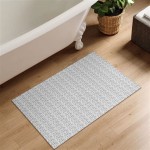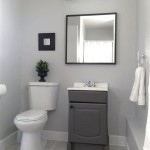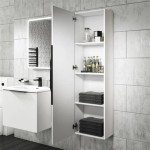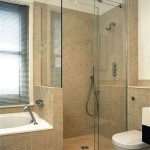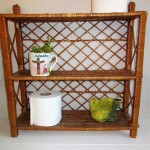30 X 18 Bathroom Vanity Top With Sink: A Comprehensive Guide
The selection of a bathroom vanity top with a sink is a crucial decision in any bathroom renovation or construction project. A 30 x 18 inch vanity top, in particular, offers a compact and efficient solution for smaller bathrooms, powder rooms, or spaces where maximizing floor area is a priority. This size provides adequate counter space for essential toiletries while maintaining a streamlined and uncluttered aesthetic. This article will explore the various aspects of a 30 x 18 bathroom vanity top with sink, including materials, styles, installation considerations, and maintenance tips.
A bathroom vanity serves a dual purpose: it provides storage space and supports the sink. The vanity top, therefore, is the surface that integrates the sink and offers the primary area for bathroom activities like washing hands, brushing teeth, and applying makeup. The dimensions of 30 x 18 inches represent the length and depth of the vanity top, respectively. These measurements are important when considering the overall layout of the bathroom and the placement of other fixtures. Choosing the correct size ensures functionality and visual harmony within the available space.
Key Considerations for Material Selection
One of the most important decisions when selecting a 30 x 18 bathroom vanity top with sink is the material. The material not only impacts the aesthetic appeal of the vanity but also its durability, maintenance requirements, and cost. Common materials for vanity tops include granite, quartz, marble, solid surface, laminate, and cultured stone. Each material possesses unique characteristics that make it suitable for different needs and preferences.
Granite is a natural stone known for its durability and resistance to heat. It offers a wide variety of colors and patterns, making each granite vanity top unique. Granite is relatively low maintenance, requiring regular sealing to prevent staining. However, it can be more expensive than other options.
Quartz is an engineered stone composed of crushed quartz and resin. It is highly durable, non-porous, and resistant to stains, scratches, and bacteria. Quartz vanity tops are available in a wide range of colors and patterns, including options that mimic the look of natural stone. Quartz generally commands a premium price point but offers excellent value due to its longevity and ease of maintenance.
Marble is a luxurious natural stone known for its elegant veining and smooth surface. However, marble is softer and more porous than granite or quartz, making it more susceptible to staining and scratching. It requires more frequent sealing and careful maintenance to preserve its appearance. Marble can add a touch of sophistication to a bathroom, but it is essential to consider its fragility and maintenance needs.
Solid Surface materials, such as Corian, are acrylic-based and offer a seamless, non-porous surface. They are resistant to stains, scratches, and bacteria and can be easily repaired if damaged. Solid surface vanity tops are available in a variety of colors and patterns and can be custom-fabricated to fit specific needs. They are a mid-range option in terms of price and offer a good balance of durability and aesthetics.
Laminate vanity tops are made of a plastic layer bonded to a particleboard or MDF core. They are the most affordable option and are available in a wide range of colors and patterns. Laminate is relatively durable and easy to clean, but it is susceptible to scratches, chips, and water damage. It is a good option for budget-conscious homeowners but may not offer the same longevity as other materials.
Cultured Stone is a composite material made of crushed stone and resin. It mimics the look of natural stone but is more affordable and easier to maintain. Cultured stone vanity tops are resistant to stains and scratches and are available in a variety of colors and patterns. They offer a good balance of aesthetics and affordability.
Understanding Sink Styles and Integration
The sink is an integral part of the vanity top, and the style of sink chosen significantly impacts the overall look and functionality of the bathroom. For a 30 x 18 inch vanity top, common sink styles include undermount, drop-in (also known as self-rimming), vessel, and integrated sinks. Each style has its advantages and disadvantages in terms of aesthetics, ease of installation, and maintenance.
Undermount sinks are installed beneath the vanity top, creating a seamless transition between the sink and the countertop. This style is popular for its clean look and ease of cleaning, as there is no rim to collect dirt and grime. Undermount sinks require a solid surface vanity top, such as granite, quartz, or solid surface, as the edge of the countertop is exposed.
Drop-in sinks are installed from above, with the rim of the sink resting on the countertop. This style is relatively easy to install and can be used with a variety of countertop materials. However, the rim of the sink can collect dirt and grime, requiring more frequent cleaning.
Vessel sinks sit on top of the vanity top, creating a dramatic focal point. This style is available in a variety of shapes, sizes, and materials, allowing for a high degree of customization. Vessel sinks require a special faucet that is either mounted on the countertop or on the wall. They can be more challenging to clean around, and care must be taken to avoid splashing.
Integrated sinks are molded directly into the vanity top, creating a seamless, one-piece unit. This style is often made of solid surface or cultured stone and is very easy to clean. Integrated vanity tops offer a minimalist aesthetic and are a good option for modern bathrooms.
The sink style should be selected based on the aesthetic preferences, budget, and functional requirements of the homeowner. Consider the depth of the sink, the size of the faucet, and the overall style of the bathroom when making a decision.
Installation and Maintenance Best Practices
Proper installation and regular maintenance are crucial for ensuring the longevity and performance of a 30 x 18 bathroom vanity top with sink. Installation should be performed by a qualified professional to ensure that the vanity top is properly supported and the sink is securely attached. Maintenance will vary depending on the material of the vanity top, but some general guidelines apply.
Installation: Before installing the vanity top, ensure that the vanity cabinet is level and securely attached to the wall. Apply a bead of silicone caulk around the perimeter of the cabinet to create a waterproof seal. Carefully lower the vanity top onto the cabinet, ensuring that it is properly aligned. If installing an undermount sink, attach the sink to the vanity top using epoxy or silicone adhesive. Connect the drain and water supply lines to the sink, ensuring that all connections are tight and leak-free.
Granite and Quartz Maintenance: Clean granite and quartz vanity tops with a mild soap and water solution. Avoid using abrasive cleaners or harsh chemicals, as they can damage the surface. Seal granite vanity tops regularly to prevent staining. Quartz vanity tops are non-porous and do not require sealing. Wipe up spills immediately to prevent staining.
Marble Maintenance: Clean marble vanity tops with a pH-neutral cleaner specifically designed for marble. Avoid using acidic cleaners, such as vinegar or lemon juice, as they can etch the surface. Seal marble vanity tops frequently to protect them from staining and etching. Wipe up spills immediately to prevent damage.
Solid Surface Maintenance: Clean solid surface vanity tops with a mild soap and water solution. Scratches and minor stains can be removed with a mild abrasive cleanser or a Scotch-Brite pad. Avoid using harsh chemicals or abrasive cleaners, as they can damage the surface. Solid surface vanity tops are non-porous and do not require sealing.
Laminate Maintenance: Clean laminate vanity tops with a damp cloth and mild soap. Avoid using abrasive cleaners or harsh chemicals, as they can damage the surface. Wipe up spills immediately to prevent water damage. Laminate vanity tops are not very resistant to heat, so avoid placing hot items directly on the surface.
Regular Cleaning: Regardless of the material, regular cleaning is essential for maintaining the appearance of the vanity top. Wipe down the vanity top after each use to remove water spots and spills. Clean the sink regularly to prevent the buildup of soap scum and grime. Inspect the vanity top periodically for signs of damage, such as cracks or chips, and repair them promptly to prevent further damage.
By selecting the appropriate material, choosing the right sink style, and following proper installation and maintenance procedures, homeowners can ensure that their 30 x 18 bathroom vanity top with sink provides years of reliable service and enhances the overall aesthetic of their bathroom.

30 In W X 18 D 32 H Bathroom Vanity With Sink White Cabinet Solid Ceramics Top

Glacier Bay Sidemere 30 In W X 18 D Vanity Driftwood Gray With Porcelain Top Solid White Basin 30609

Eviva Happy 30 X 18 Transitional Gray Bathroom Vanity With White Carrara Marble Countertop

30 In W X 18 D 34 H Single Sink Freestanding Bath Vanity White With Ceramic Top

Blossom 30 X 18 White Rectangular Acrylic Vanity Top With Integrated Single Sink And Overflow

Meje 30x18 Inch Drop In Rectanglar 3 Holes Bathroom Sink Vanity Top Only White Glossy Finish

Blossom 30 X 18 White Rectangular Acrylic Vanity Top With Integrated Single Sink And Overflow

Project Source White Single Sink Bathroom Vanity With Cultured Marble Top

30 X 18 Bathroom Vanity With Sink

36 X18 Free Standing Bathroom Vanity With Sink Top W Doors And 6 Drawers Gray

